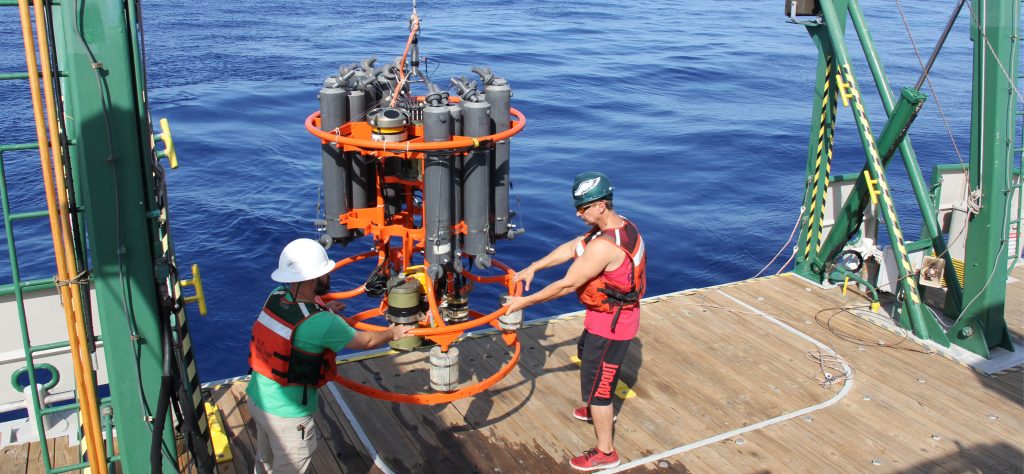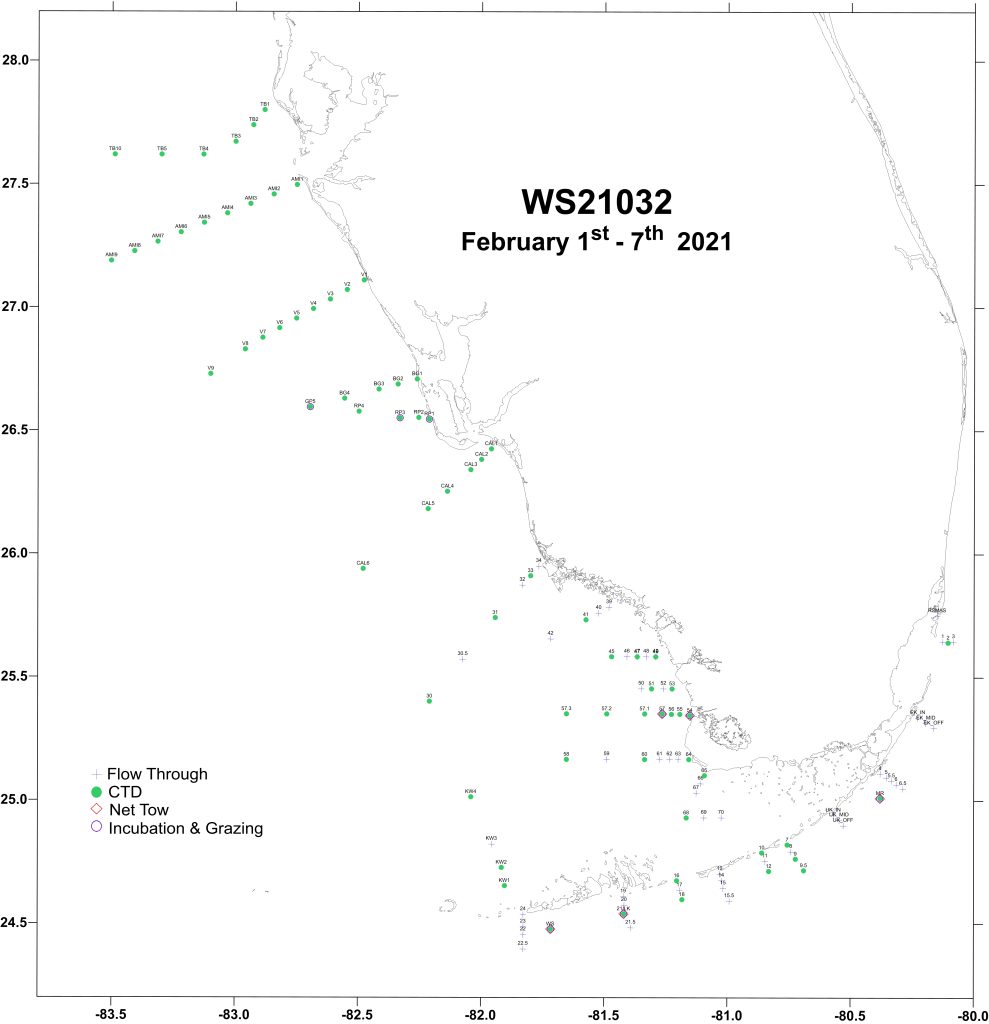
Scientists are heading to sea on the R/V Walton Smith to sample areas where red tide blooms are commonly present off the west Florida coast. Karenia brevis, the organism that causes red tide, forms blooms when elevated concentrations (>100,000 cells per liter) are present in the water. K. brevis produces toxins called brevetoxins that can cause massive fish kills, weaken or kill marine mammals, and, when the toxin becomes aerosolized and inhaled, cause respiratory distress in humans and marine mammals. The team of scientists will be comprehensively sampling a series of transects along the West Florida Shelf.
This upcoming survey is of particular interest because K. brevis has been observed in southwest Florida since December 2020 and offshore chlorophyll patches have been observed in recent remote sensing imagery (provided by the University of South Florida). Red tide will be detected while onboard by an Imaging Flow Cytobot, a flow cytometer that takes high-resolution images of all the microscopic particles present in water samples collected autonomously every 20 minutes during the survey.
Since 1998, scientists have been conducting water quality sampling missions along the west Florida coast as part of the South Florida Ecosystem Restoration Research project. The original mission of the project was to assess and evaluate the impacts and benefits of the Everglades Restoration project on downstream coastal ecosystems. The long-term dataset is critical for detecting degradations in water quality.
In recent years, the mission has been expanded to include biodiversity measurements through partnerships with the Marine Biodiversity Observing Network, the Florida Fish and Wildlife Conservation Commission-Fish and Wildlife Research Institute (FWC-FWRI)’s Harmful Algal Bloom program, and SECOORA.
“In partnership with FWRI and SECOORA, the research area has been increased to better examine the oceanography and chemistry in offshore areas inhabited by red tide. It has also allowed us to incorporate new technologies (such as the imaging Flow Cytobot) into the research cruise.” – Chris Kelble, NOAA’s Atlantic Oceanographic and Meteorological Laboratory (NOAA AOML).
This includes routinely monitoring oceanographic conditions and red tide in an area spanning offshore of Tampa Bay to offshore of Pine Island Sound. The map shows locations where scientists onboard the R/V Walton Smith will take water water quality measurements and deploy the Imaging Flow Cytobot to detect the presence or absence of K. brevis. The research team will include scientists from NOAA-AOML, FWRI, and the University of South Florida and remain at sea from February 1 – 7, 2021.
Kate Hubbard, who leads FWC-FWRI’s harmful algal bloom program, is enthusiastic about this collaborative effort to strengthen red tide observations: “Adding more routine and comprehensive measurements offshore provides us with an unprecedented snapshot of current conditions, and at the same time, allows us to strengthen our foundation for examining changes and trends in harmful algal bloom severity over time.”
Related news

New High Frequency Radar at the Dry Tortugas National Park Improves Ocean Surface Current Measurements Across the Straits of Florida
A new CODAR Low-Power SeaSonde HFR has been deployed by the University of South Florida at Fort Jefferson on Garden Key to measure surface currents to improve understanding and prediction of the Gulf of Mexico Loop Current.

President Biden Proposes Significant Budget Cuts to IOOS for 2025
President Biden’s recent 2025 budget proposal slashed the funding allocated for the Integrated Ocean Observing System (IOOS) by 76%, which would effectively shut down coastal and ocean observing efforts.

Webinar: NOAA Resources to Help Coastal Communities Understand Flood Risk
Join us Wednesday, March 27th at 12 PM Eastern Time for SECOORA's Coastal Observing in Your Community Webinar Series to hear from Doug Marcy with the NOAA Office for Coastal Management.
